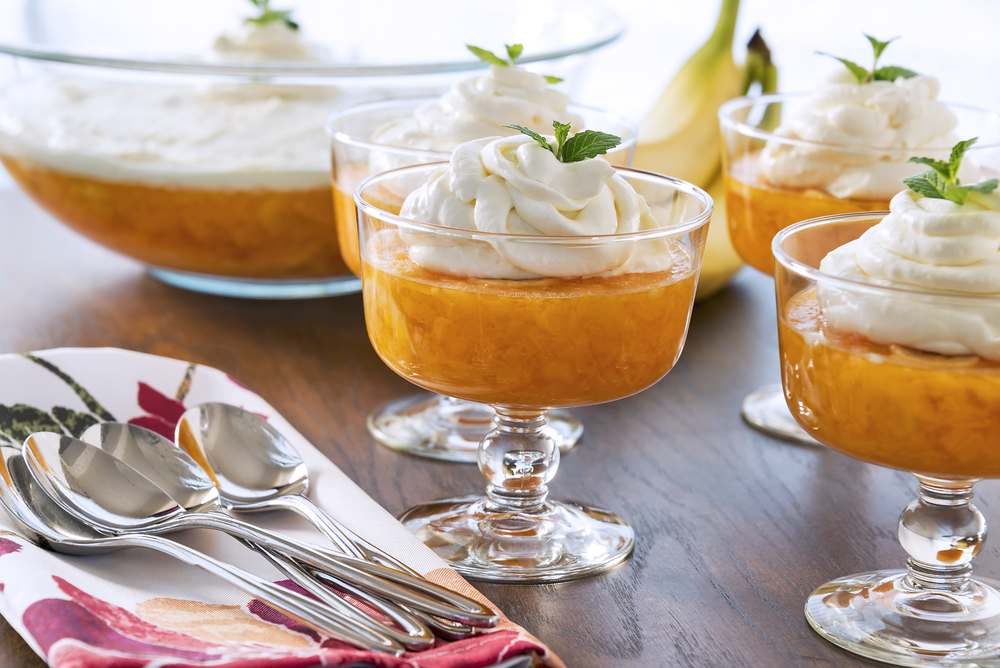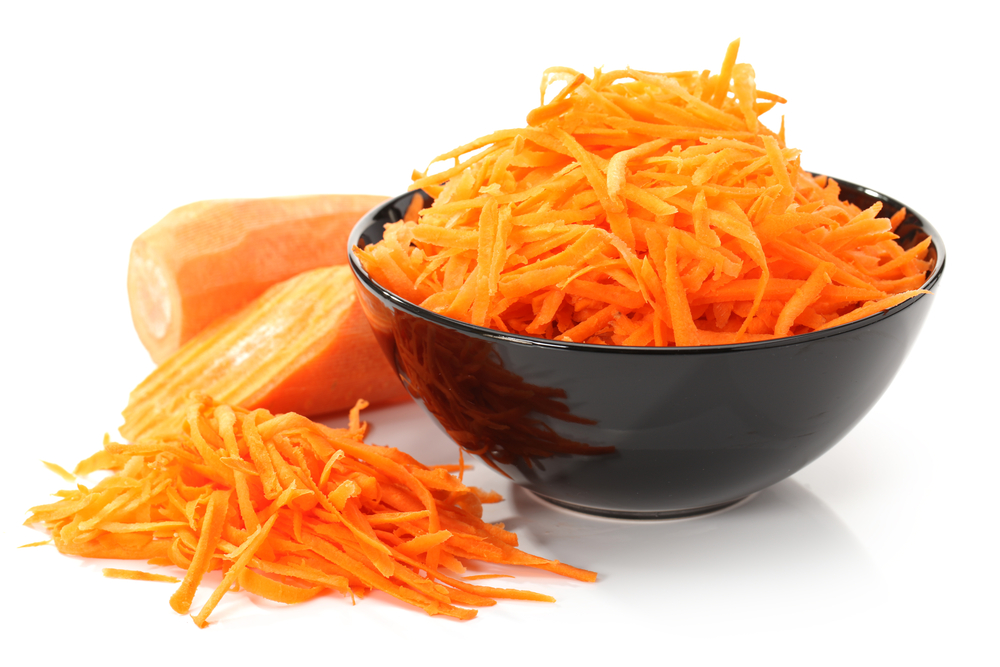Jell-O salads reigned in 20th century America, climbing in popularity though the early decades and reaching their peak in the 1950s. Gelatin dishes themselves date to medieval Europe, however, and as the process of rendering collagen from animal bones was time-consuming and labor-intensive, jellied offerings were considered elite foods. As early American colonists adapted European customs, foods made with gelatin remained status symbols, hinting at large household staffs with time to prepare them.
When Jell-O was patented in 1897, the instant gelatin coincided with the era’s focus on home economics and the spread of modern advancements such as gas stoves and refrigerators. Leftovers from spinach to chicken could now be encased in the newly affordable gelatin, in neat and decorative molds. Fruit became the most common addition to gelatin salads, though other ingredients included cream cheese, cottage cheese, and an array of vegetables.
Appealingly jewel-like with shimmering translucent colors, this flavorful “grandma’s recipe” has both a fruit and vegetable, an appealing crunch, and the essential ingredient—instant gelatin. Seen as retro revivals or symbols of a bygone era, Jell-O salads remain classically American.
Recipe Servings: 4
+ 2 hours resting
Ingredients
Directions
- In a medium bowl, add gelatin then hot water, stirring until dissolved.
- Drain pineapple and reserve juice. Set both aside.
- Combine lemon juice and pineapple juice.
- Add enough cold water to juice so they equal 2 cups.
- Stir in salt if using, then stir in gelatin mixture.
- Chill until slightly set, about 1–2 hours.
- Stir in pineapple and carrots, mixing well.
- Pour into serving bowl and chill another 1–2 hours until set.
Recipe introduction and directions © Copyright 2016-2025 World Trade Press. All rights reserved.


